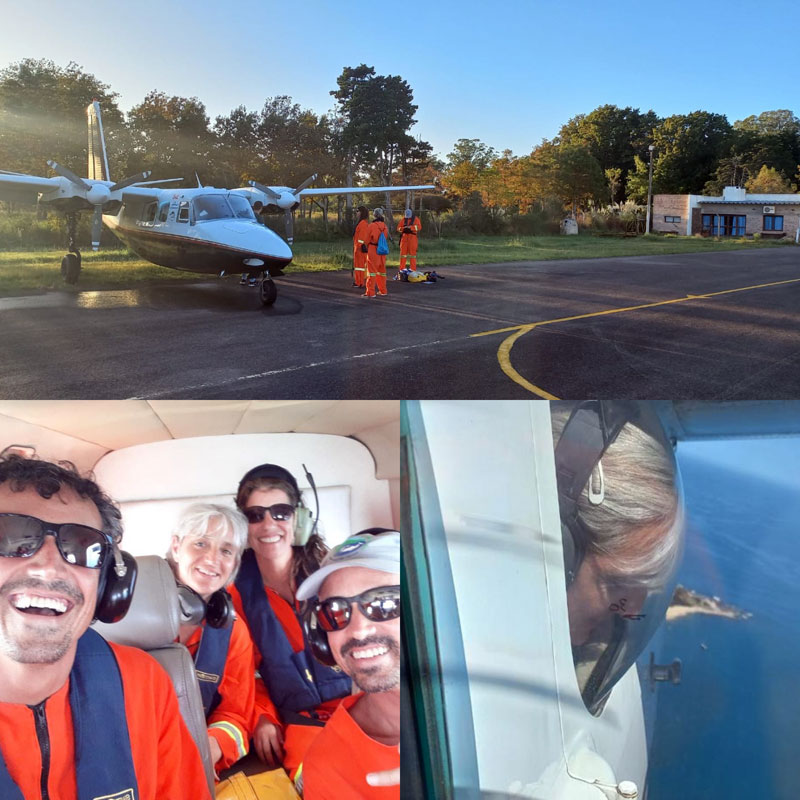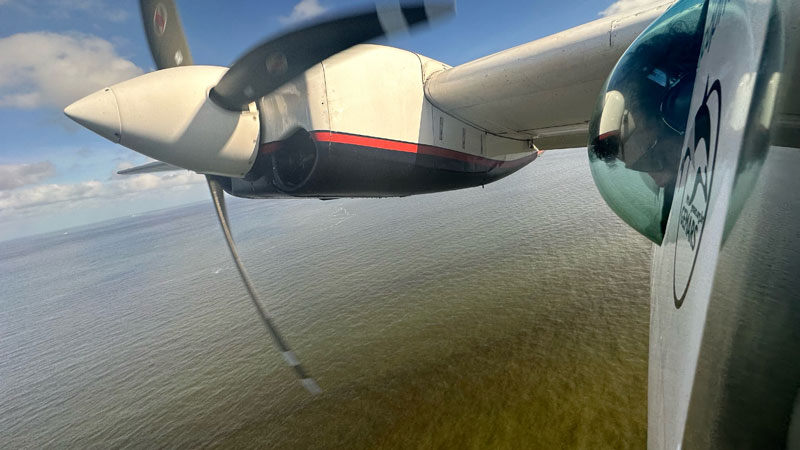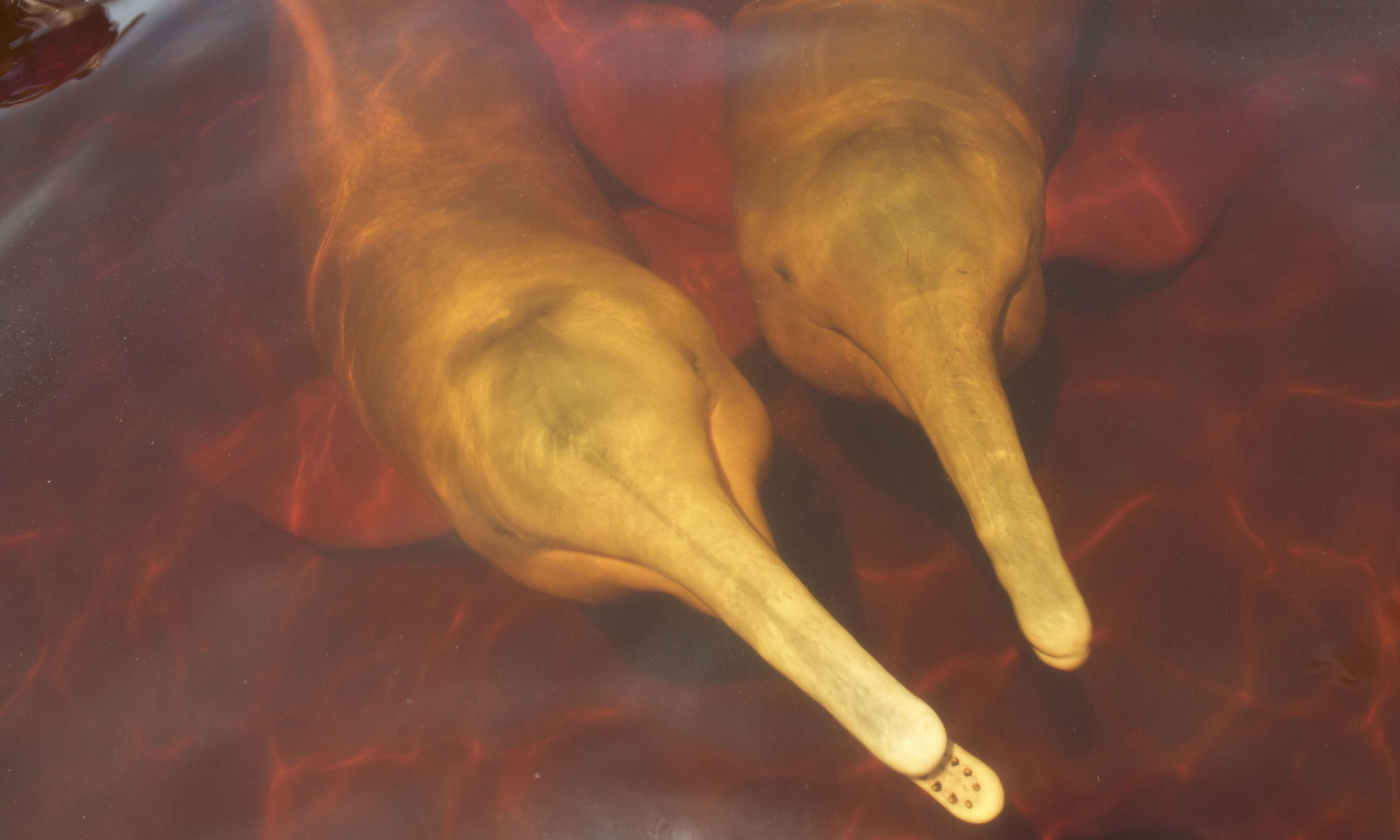Die Franciscana Flugzählung in Uruguay – eine Herausforderung
Der Franciscana (Pontoporia blainvillei) ist ein kleiner Delfin, der in den Küstengewässern Brasiliens, Uruguays und Argentiniens heimisch ist. Franciscanas leben hauptsächlich in Küstengewässern jenseits der Brandungszone bis zu einer Tiefe von 50 m, wobei sie auch in einigen Buchten und Flussmündungen vorkommen. Die Art gilt als die am stärksten bedrohte Delfinart Südamerikas, was auf die unbeabsichtigte Tötung in der handwerklichen und industriellen Fischerei sowie die zunehmende Zerstörung der Lebensräume zurückzuführen ist. In der Roten Liste der bedrohten Arten der IUCN wird der Franciscana derzeit als “gefährdet” eingestuft und das Nationale System geschützter Naturgebiete (SNAP) in Uruguay sieht ihn als vorrangig zu erhaltende Art an. Es wurden vier Franciscana Management-Gebiete (FMA) vorgeschlagen, von denen das FMA III in Rio Grande do Sul (Südbrasilien) und an der uruguayischen Küste die höchsten Beifang Schätzungen aufweist. In der Vergangenheit wurden Franciscana in Uruguay in relativ großer Zahl getötet (fast 4000 Tiere zwischen 1974 und 1993) und in jüngerer Zeit sowohl in Uruguay als auch in Brasilien (jährliche Sterblichkeit von etwa 1000 – 2000 Tieren). Die Schätzung der Bestandsgröße in dieser Region ist daher wichtig, um die möglichen Auswirkungen dieser hohen fischereibedingten Sterblichkeit auf den Bestand zu beurteilen. Bislang wurde der Bestand nur im brasilianischen Teil der FMA III geschätzt und für die uruguayischen Gewässer liegen keine zuverlässigen Schätzungen vor.

Vom 01. März bis zum 04. April 2023 wurden, unterstützt durch YAQU PACHA, in den uruguayischen Gewässern Erhebungen aus der Luft durchgeführt, um die Population der Franciscana Delfine zu schätzen und Aufzeichnungen über das Vorkommen der Art zu erhalten. Die Suche nach Franciscana Gruppen wurde von einem zweimotorigen Aerocommander 500B Hochdecker aus in einer annähernd konstanten Höhe von 150 m (500 ft) und mit einer Geschwindigkeit von 170-200 km/h (~90-110 Knoten) durchgeführt.

Es wurden drei Erhebungsregionen vorgeschlagen: i) Uruguayische Offshore-Gewässer (30-50 m) (UY-Offshore-Stratum), ii) Uruguayische Küstengewässer (0-30 m) (Schicht UY-Inshore) und iii) Mündungsgebiet des Río de la Plata in Uruguay (Schicht UY-Río de la Plata). Insgesamt wurden 2629 km Transekte auf einer Gesamtfläche von 49.483 km2 vermessen und es wurden insgesamt 53 Franciscana Gruppen mit einer durchschnittlichen Gruppengröße von 1,8 Individuen erfasst. Die Gesamtdichte wurde auf 0,606 Individuen/km2 geschätzt und die Abundanz für das gesamte Gebiet auf 30.011 Individuen (95% CI = 15.304 – 58.852). Andererseits wurde bei den Erhebungen aus der Luft an der Südküste Brasiliens (Sektor, der Teil der FMA III ist) eine Gesamtfläche von 30.859 km2 erfasst, und die Gesamtdichte wurde auf 0,426 Individuen/km2 und die Abundanz auf 13.137 Individuen (95% CI = 7.037 – 24.526) geschätzt. Obwohl die in dieser Studie für die FMA III geschätzte hohe Abundanz auf einen gesunden Zustand dieses Bestands hindeuten könnte, waren die Beifang Schätzungen für die FMA III die höchsten unter allen FMAs. Dies ist die erste Studie, in der eine vollständige Erhebung aus der Luft in der FMA III durchgeführt und eine Schätzung der Abundanz (43.148 Individuen mit 95% CI = 23.786 – 78.271) und Dichte (0,537 Individuen/km2) für den gesamten Bestand sowie bisher unbekannte Dichte- und Abundanzwerte für die uruguayischen Gewässer ermittelt wurden. Die fortgesetzte Überwachung der Population durch Erhebungen aus der Luft ist von entscheidender Bedeutung, um die Auswirkungen des Beifangs und anderer Quellen nicht erfasster Sterblichkeit auf die Populationsdynamik der in uruguayischen Gewässern lebenden Franciscana Delfine besser zu verstehen.
Uruguayisches Forschungsteam: Valentina Franco-Trecu, Cecilia Passadore, Caterina Dimitriadis
Brasilianisches Forschungsteam: Federico Sucunza, Daniel Danilewicz, Emanuel Ferreira, Martin S. Perez, Alexandre N. Zerbini

